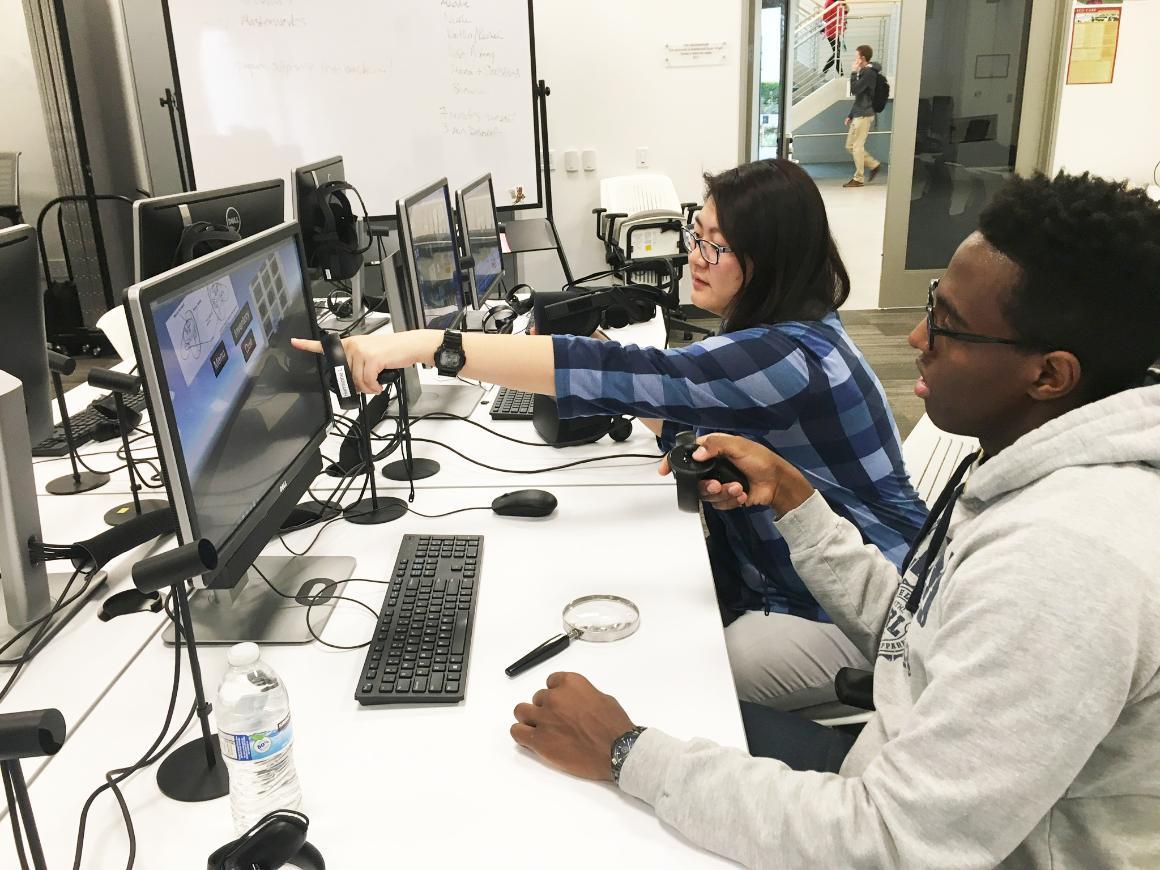
The Case of the Virtual Crime Scene
Imagine a crime scene. The head trauma victim is slumped, lifeless, in an easy chair. On the table by his side, a bottle and a gun. You carefully examine the wound, the potential murder weapons, and look for any other clues left behind by the perpetrator. But you are not actually in the room: You are doing some 21st century sleuthing aided and abetted by an Oculus Rift immersive virtual reality headset and Sherlock, a VR crime scene reconstructor imagined and designed by computer engineering seniors Ellen Tseng and Ken Wakaba.
Tseng’s love of playing video games led her to the idea for a tool to help investigators who don’t have enough time to process the evidence gathered on site to reconstruct the scene later, piece by piece. “I’d played a game where you determine how a crime was committed by inputting information about the scene. AR holograms and animation would pop up based on the data you selected, and it was fun. When I looked into the types of crime scene re-creation tools available to actual law enforcement personnel, I found they weren’t interactive and weren’t as immersive and they could be, so I wanted to experiment with VR to make a reconstructor.” Needing a partner in crime, she posted a Facebook message asking if any of her classmates were interested in teaming up.
“I said I’d be down with that,” said Wakaba. “I thought it was a really cool concept. VR is a hot new technology, and there’s going to be a lot more innovation happening in this area, so I wanted to get a jump on it and learn more about it now.” The two of them enrolled in a VR “boot camp” put on by Santa Clara University’s Imaginarium, a new on-campus space for experimenting with virtual and augmented reality. Over the past year, the courses have led the pair through the process of developing, prototyping, and refining their senior design project.
Initial steps included creating software models for weapons, furniture, bodies, and other items that might be relevant to a crime scene. Next, they moved on to determining what they wanted users to see, how the start menu would work, and designing the movement of the program itself. “We’re using Unity as the game engine to create the program, and we’ve had to figure out how to code using C Sharp, which neither of us had used before. We were able to pick it up quickly, but we’re learning as we go along,” said Tseng.
In their prototype, users have two options—load a pre-saved crime scene or create a new one. In the first option, the user is brought into a crime scene and may interact with objects in the room. In “Create a Scene,” the user can choose the lighting or weather, select items from an inventory menu to place in the scene, and re-create an actual crime scene.
The team sees their prototype as a tool, rather than a game. “This could be used for training CSI teams. A test scene could be created from scratch and trainees can learn what they should be focusing on in a real crime scene, or it could be used in court to remove bias involved when presenting evidence,” said Wakaba, who is enrolled in the School of Engineering’s five-year combined BS/MS program and is already taking graduate courses. “This project has been both time-consuming and enjoyable,” he added. “It’s cool that we get to play with VR, but it’s not a walk in the park. It’s been challenging and hard, but I’m learning a lot and appreciating what I’m learning.”